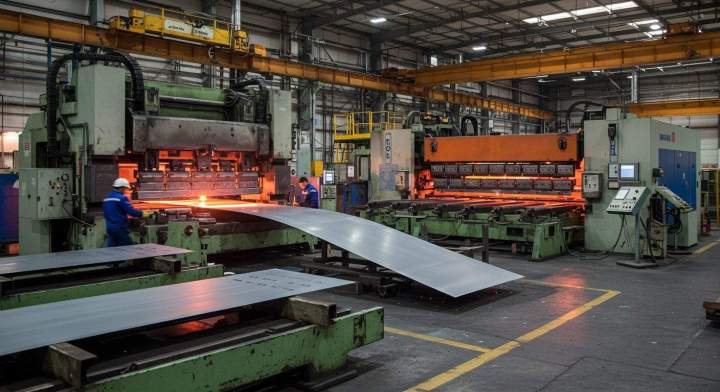Sheet Metal Manufacture Process: From Raw Material to Finished Product
Sheet Metal Manufacture Linkeo / July 23, 2025

Understanding Raw Materials
Types of Materials Used
The foundation of sheet metal manufacture lies in the selection of raw materials. Common metals utilized include aluminum, stainless steel, copper, and carbon steel. Aluminum is favored for its lightweight and corrosion-resistant properties, making it ideal for industries like aerospace. Stainless steel, known for its durability and aesthetic appeal, is often used in kitchen appliances and medical equipment. Copper, while expensive, offers excellent electrical conductivity, useful in electrical applications.
Material Specifications
Before production begins, it is critical to assess the specifications of the chosen material. This includes determining thickness, tensile strength, and alloy composition. Each specification influences the manufacturing process and the final product's performance. A proper understanding of these parameters ensures that the sheet metal will meet the end-use requirements.
The Manufacturing Process
Step 1: Melting and Casting
The journey from raw material to finished product starts with melting the selected metal in a furnace at high temperatures. This process transforms the solid metal into a molten state, allowing it to be easily shaped. Once melted, the metal is poured into molds to create large slabs or ingots, which will later be reduced to sheets.
Step 2: Hot and Cold Rolling
After casting, the metal undergoes rolling, a process that reduces its thickness and increases its length. In hot rolling, the metal is processed at temperatures above its recrystallization point, allowing it to deform easily. This method is often used for thicker sheets. Conversely, cold rolling occurs at room temperature, providing a smoother finish and tighter tolerances, ideal for thinner sheets.
Step 3: Annealing
To relieve internal stresses and improve ductility, the rolled metal sheets may undergo an annealing process. This involves heating the metal to a specific temperature and then allowing it to cool slowly. Annealing enhances the sheet's workability, making it easier to shape during subsequent processes.
Step 4: Cutting
Following annealing, the sheets are cut to size. This step can be performed using various techniques, including shearing, laser cutting or waterjet cutting. Each method offers distinct advantages; for instance, laser cutting provides precision and can handle intricate designs, while shearing is efficient for straight cuts.
Forming Techniques
Bending
Once cut, the sheets may need to be bent to achieve the desired shapes. Bending is typically performed using press brakes or other forming tools. The angle and radius of bends are crucial, as they affect both the aesthetics and functionality of the final product.
Stamping
Stamping involves using dies to create shapes and features in the sheet metal. This process can produce complex designs, including holes and embossed patterns. Stamping is particularly efficient for high-volume production runs, as it minimizes waste and maximizes speed.
Welding and Assembly
For products requiring multiple components, welding and assembly techniques are employed. Welding joins metal pieces through melting and fusing, while assembly might involve riveting or using adhesives. The choice of method depends on the strength requirements and the final application of the product.
Surface Treatment
Finishing Processes
The final stages of sheet metal manufacturing often involve surface treatments to enhance durability and appearance. Common treatments include painting, powder coating, anodizing, and galvanizing. These processes provide protection against corrosion and improve aesthetic appeal, which is particularly important in consumer-facing applications.
Quality Control
Throughout the manufacturing process, quality control is paramount. This involves regular inspections and testing to ensure that the finished product meets industry standards and customer specifications. Techniques such as ultrasonic testing and visual inspections are commonly employed to detect defects.
Sheet metal fabrication requires technical expertise and specialized equipment to ensure high-quality results. Every stage of the process, from cutting to shaping, demands precision and skill. For custom manufacturing projects, consult a metalworking expert who can help optimize your technical specifications.